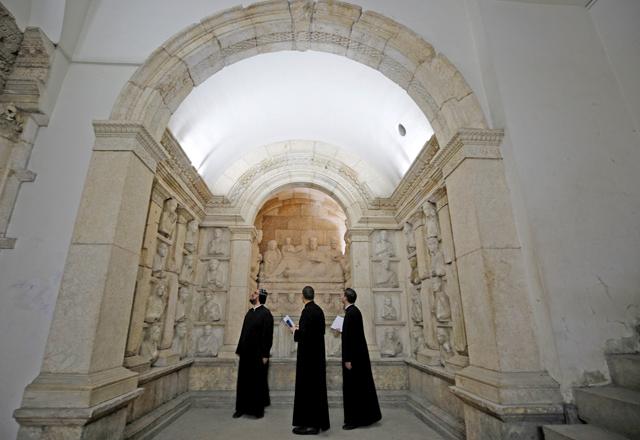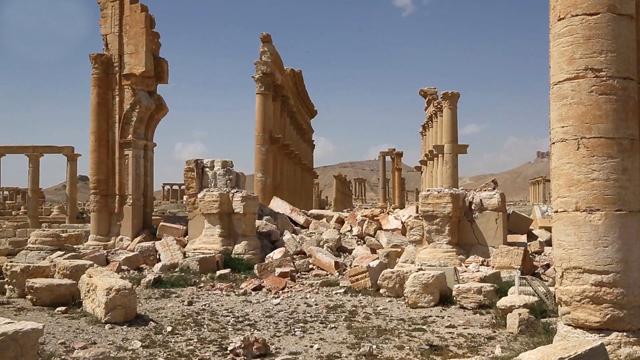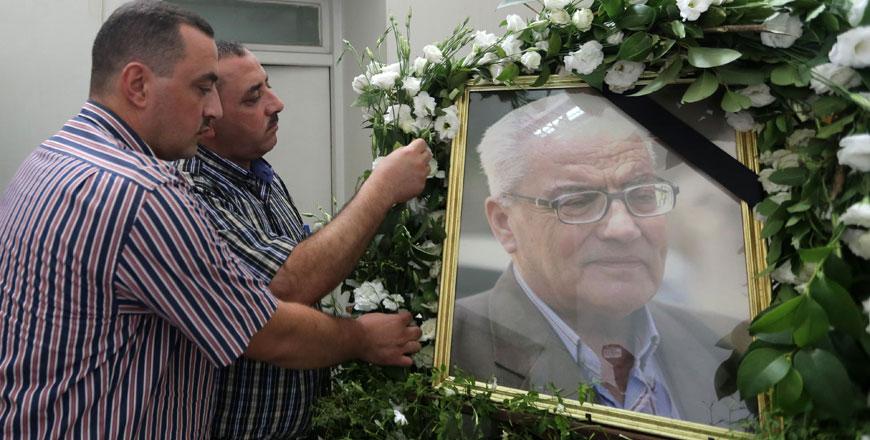You are here
Syria’s national museum reopens doors in war-scarred Damascus
By Reuters - Oct 28,2018 - Last updated at Oct 28,2018

Visitors look at sculptures during the reopening of Syria's National Museum of Damascus, Syria, on Sunday (Reuters photo)
DAMASCUS — Syria's National Museum of Damascus opened its rich trove of antiquities to visitors again on Sunday, seven years after war forced them to close and months after the government recaptured all rebel areas near the capital.
Only part of the museum, and its collection drawn from the civilisations that have ruled Syria over the millennia, will be reopened immediately, its Deputy Director Ahmad Deeb said.
"We will exhibit a group of artefacts from all periods from prehistory, the ancient east and the classical and Islamic eras in this section," he said.
The reopening is a sign of the government's attempts to restore normality in the capital after a succession of Russia-backed army victories since 2015 that have ended the threat to President Bashar Assad's rule.
A bloody army offensive this spring forced the rebels to surrender Eastern Ghouta in April, and the remaining insurgents enclaves near Damascus capitulated in the following weeks.
The conflict continues, with swathes of the country still outside Assad's control, but it has stabilised with a Russian-Turkish deal over the last rebel bastion in the northwest, and US backing for Kurdish-led forces in the northeast.
The fate of Syria's ancient heritage has hung in the balance for much of the conflict, as fighting erupted in major sites such as the Old City of Aleppo and others, including the desert ruins of Palmyra, fell into the hands of iconoclastic extremists.
As the insurgency began to spread in 2011, the government evacuated the museum's collection, one of the most important in the Middle East, along with those of provincial museums, hiding their artefacts far from the battlefield.
In Aleppo, where the museum lay near the front line, the huge ancient statues outside were too large to transport, and were boarded up in giant crates filled with cement against shrapnel damage.
"The masterpieces were hidden straight away," said Deeb. Army trucks carried antiquities from sites across the country to stash in safety, he said. The collection of Deir Ezzor Museum, isolated by fighting, was airlifted to Damascus.
In the capital, the empty museum continued to be used by the general directorate of antiquities as an office, and was hit by mortar fire, but not badly damaged.
As the rebel presence around Damascus weakened in recent years, some statues were put on display to the public in the museum garden, including the Lion of Elat, a massive piece from Palmyra that was damaged by Daesh and later restored.
Other objects, recovered by the government after they were seized by insurgents or smuggled overseas, were put on display this month in the Damascus Opera House, a testament to the looting of heritage that has characterised much of the war.
Related Articles
DAMASCUS — Palmyra's renowned Temple of Bel, blown up by the Daesh terror group last year, is not beyond repair but the full extent of
DAMASCUS — Daesh militants mutilated the body of a famed Syrian archaeologist after killing him execution-style in the ancient city of Palmy
DAMASCUS —Daesh militants have mined the spectacular ancient ruins in Syria's Palmyra, an antiquities official and monitor said Sunday, prom














